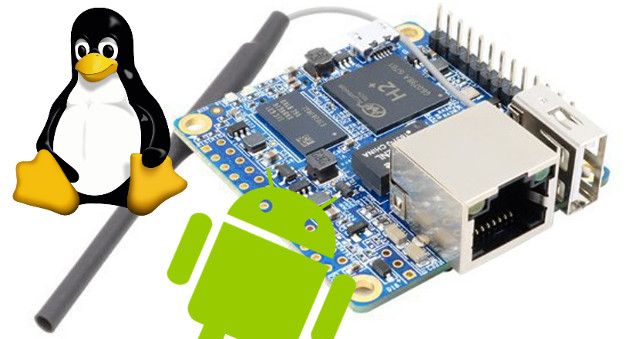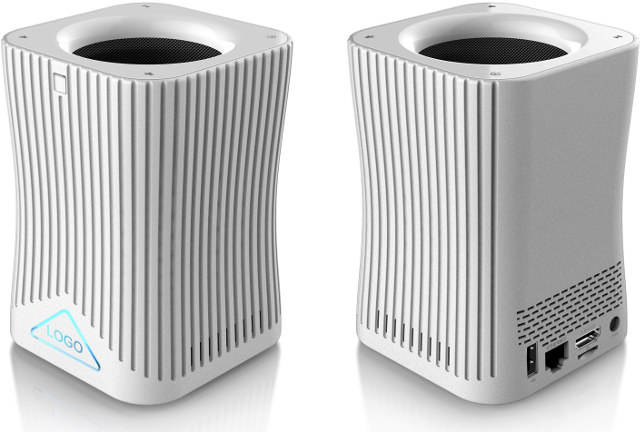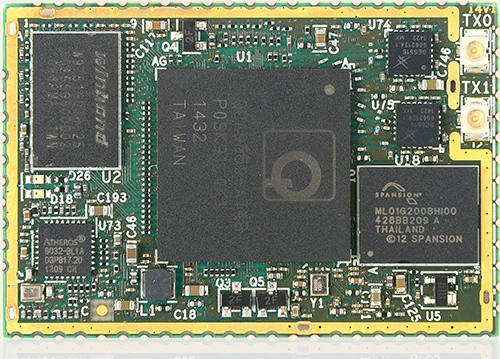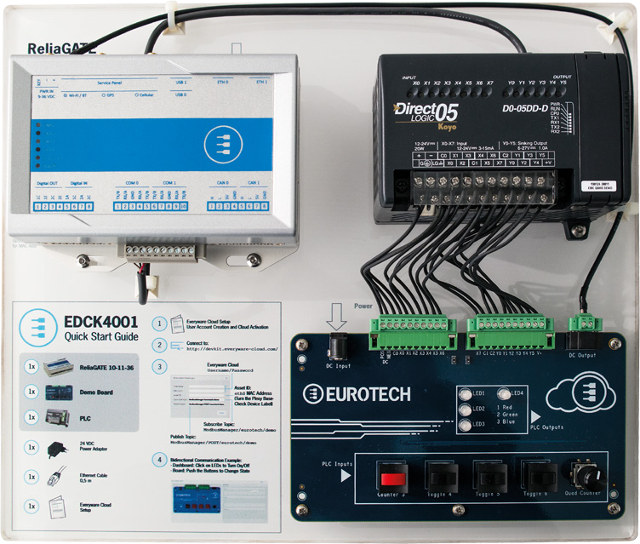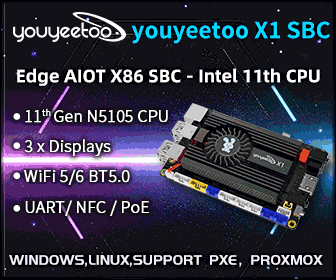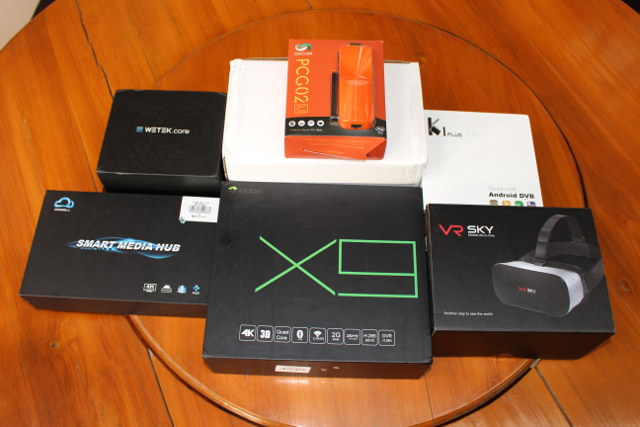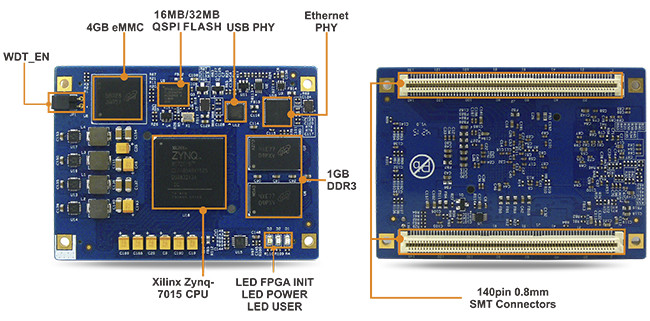LoRa appears to be one of the most popular LPWAN standards so far, with hobbyist development boards such as LoPy or LoRaONE, and we’ll soon have at least one more choice thanks to Marvin, a LoRa development board with a full size USB port. Marvin board specifications: MCU – Atmel/Microchip ATmega32u AVR MCU (same as Arduino Leonardo board) Connectivity – LoRa via Microchip RN2483; Supports both 868 MHz and 433 MHz frequency bands, on-board antenna USB – 1x USB, 1x micro USB port for power and programming Debugging – USB, and ISP header Expansion – 5x Grove connectors Power Supply – 5V via USB port Dimensions – N/A, but similar to USB flash drive The board can be programmed with the Arduino IDE, and they mention IBM Bluemix platform, and Node-RED, but overall details about documentation and software are scarce right now. One of the advantage of this form factor is […]
Allwinner H2 Linux & Android SDK, and Allwinner XR819 WiFi Driver Released
Orange Pi Zero is an interesting little ARM Linux board thanks to its low price, but also because it features a new Allwinner H2 / H2+ quad core Cortex A7 processor very similar to Allwinner H3 minus the 4K video decoding part, as well as Allwinner XR819 WiFi module, which I have not seen on any other boards so far. But hardware without software is pretty much useless, so developers will be happy to find out that Allwinner H2 SDK with Linux (lichee) and Android has been released or leaked, and it also includes the Allwinner XR819 WiFi driver. You’ll find the SDK on Zoobab server with three main directory / files: Android folder – Android 4.4.2 SDK lichee folder – Linux 3.4.39 source code. However you’d probably better use Linux 3.4.113 currently released by sunxi-linux, or Linux mainline. The latter does have some limitations, and may or may not […]
HF10 is a 2-in-1 Android 6.0 TV Box & Bluetooth Speaker Powered by Amlogic S905X Processor
We’ve previously seen CS668 TV box combining an Android TV box, a Bluetooth Speaker, and a power bank into a single device, but audio quality is likely to be mediocre on such as small device. Eny Technology HF10 is slightly different as it combines an Amlogic S905X Android TV box with a larger 10 Watt speaker with a class-D amplifier, and can also used as a Bluetooth speaker. HF10 specifications: SoC – Amlogic S905X quad core ARM Cortex-A53 @ up to 1.5 GHz with Mali-450MP GPU System Memory – 1GB DDR3 (option: 2GB) Storage – 8GB eMMC flash (Options: 16 and 32GB) + micro SD slot up to 32 GB Video Output – HDMI 2.0 up to 4K @ 60 Hz Audio HDMI output 2.5″ 10W mono bass speaker with class-D amplifier Connectivity – 10/100M Ethernet, 802.11 b/g/n/ac Wi-Fi, and Bluetooth 4.0 USB – 1x USB 2.0 host port Misc […]
November 11 Singles’ Day Promotions in Chinese Online Stores
November 11 is Single’s day in China, and just like Valentine’s day, it is used for commercial purpose to make people buy stuffs. It’s also Black Friday before Black Friday, as Chinese online stores will also offer discounts to their customers, and this remains true for stores catering to oversea customers, so you may find a few interesting deals from 11.11 day festivities around the web. I’ve gathered a few of the offers from the most popular Chinese sites catering to overseas markets. GeekBuying has an “11.11 Carnival” that actually started on November 1st, and ending on November 12th. They have promotions changing every day, as well as some coupons such as DB1111 $15 coupon if you spent over $215. Aliexpress calls it “11.11 Global Shopping Festival” instead. You can buy coupons for half price, and check out for products with the red SALE icon on the left of the […]
8Devices Rambutan Qualcomm Atheros QCA9557 / QCA9550 GbE & WiFi Modules and Development Kit Run OpenWrt
8Devices, a Lithuanian company specialized in the development and manufacturing of electronic equipment, is known for their Carambola and Carambola2 WiFi modules powered by Ralink and Qualcomm Atheros WiSoCs. The company has now introduced a new dual band WiFi module called Rambutan that comes in commercial and industrial temperature range through respectively Qualcomm Atheros QCA9557 & QCA9550 SoCs. Rambutan and Rambutan-I modules specifications: SoC Rambutan – Qualcomm Atheros QCA9557 MIPS processor @ 720 MHz Rambutan-I – Qualcomm Atheros QCA9550 MIPS processor @ 720 MHz System Memory – 128 MB DDR2 Storage – 128 MB Flash Connectivity WiFi – 802.11 a/b/g/n, 2.4 or 5 GHz, 2×2 MIMO, 300 Mbps data rate, 21 dB per chain output power; 2x u.FL connectors Ethernet – Atheros AR8032 10/100M Ethernet PHY 68x half holes with 2 x USB 2.0 host port 2 x serial port 1x 100 Base-T Ethernet port; 1000 Base-T Ethernet port (SGMII […]
Eurotech EDCK 4001 Everyware Device Cloud Development Kit Includes IoT Gateway, PLC and Demo Board
Eurotech has recently EDCK 4001 “Everyware Device Cloud Development Kit” for professionals who wish to experiment with and/or develop IoT/M2M applications. It includes the company’s ReliaGATE 10-11 IoT gateway powered by Texas Instruments Sitara AM3352 Cortex A8 processor, DirectLOGIC DL05 PLC, and a control/demo board with buttons, LEDs, and rotary encoder, as well as all necessary cables and accessories. ReliaGATE 10-11 gateway specifications: SoC – Texas Instruments AM3352 ARM Cortex A8 processor @ 800MHz Memory – 512MB DDR3 Storage – 4GB eMMC flash, user accessible micro SD Slot Connectivity – 2x 10/100Mbps, WiFi and Bluetooth, optional Cellular connectivity and GPS via ReliaCELL USB – 3x USB 2.0 host ports; noise and surge protected Serial – 2x RS-232/RS-485 (Surge protected, RS-485 termination and Fail-safe Resistors); 1x Serial Console TTL CAN – 2x CAN 2.0b bus with 5V/100mA power out Digital I/O – 2x Digital Input 5V (TTL), 1KV opto-isolated – 2x […]
Giveaway Week Winners – November 2016
Ladies and gentlemen, I’m going to announce the results the whole world is eagerly waiting for today, and as you’ve probably guessed it, by that I mean CNX Software Giveaway Week 2016 contest… obviously… We had seven winners sharing the prizes shown below from Android TV boxes, to a Linux TV stick, and an Android virtual reality headset. 2016 has been an interesting year so far, putting statisticians, pundits, pollsters, and generally speaking odds to shame, and random.org apparently decided to join that trends, as while most of the blog’s traffic – and I’d assume entries – come from the western world (North America / Western Europe), random.org mostly selected winners from other countries: VR SKY CX-V3 VR headset – Dainis, Latvia WeTek Core TV box – Homer, Morocco Vana Player Hifi Linux audio player – Fakham, Pakistan MeLE PCG02U Ubuntu TV stick – Ziggy, Singapore Coowell V4 Android tv […]
MYIR Tech Latest SoM and Development Board Feature Xilinx Zynq-7015 ARM + FPGA SoC with 4 High Speed Transceivers
MYIR Tech launched the low cost Z-Turn board powered by Xilinx Zynq-7010/7020 ARM+FPGA SoC last year, and the company has now introduced a new system-on-module powered by Xilinx Zynq-7015 SoC as well as a corresponding development kit. MYC-C7Z015 CPU Module specifications: SoC – Xilinx XC7Z015-1CLG485C (Zynq-7015) dual core ARM Cortex-A9 processor @ 667 MHz (up to 866MHz) with Artix-7 class FPGA subsystem with 74K logic cells, 46,200 LUTs, 160 DSP slices, 4x high-speed SerDes transceivers up to 6.25 Gbps, 4x four PCIe Gen2 hardened, integrated IP blocks System Memory – 1GB DDR3 SDRAM Storage – 4GB eMMC flash, 32MB QSPI Flash (16MB optional) Connectivity – 1x Ethernet PHY, 1x USB PHY I/Os and peripherals via 2x 140-pin board-to-board connectors: 1x Gigabit Ethernet 1x USB OTG 2.0 Up to 2x serial ports, up to 2x I2C, up to 2x CAN BUS, 1x SPI 1x independent differential ADC, 16-channel ADC 1x SDIO […]



